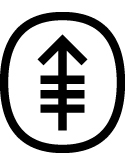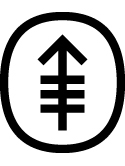In vitro cytotoxicity of VP-16-213 and nitrogen mustard: Agonistic on tumor cells but not on normal human bone marrow progenitors Journal Article
| Authors: | Lemoli, R. M.; Gulati, S. C. |
| Article Title: | In vitro cytotoxicity of VP-16-213 and nitrogen mustard: Agonistic on tumor cells but not on normal human bone marrow progenitors |
| Abstract: | The possible presence of tumor cells in remission bone marrow (BM) is one of the major problems for the success of autologous BM transplantation (ABMT), because the reinfusion of viable malignant cells may result in relapse. In this study we attempted the purging of the malignant cells by the use of VP-16-123 (VP-16) and nitrogen mustard (NM) either alone or in combination. Four cell lines from various hematological malignancies were utilized: SK-DHL-2 was established from a B-cell diffuse histiocytic lymphoma; RAJI was from an Epstein-Barr virus (EBV)-infected B-cell lymphoma cell line; K-562 were from a chronic myelogenous leukemia (CML) blastic crisis; and HL-60, derived from a human promyeolcytic leukemia, were used in exponential growth phase. Four logs of tumor cell elimination were observed after 1-h incubation of RAJI cells with 25 μg/ml of VP-16. K-562 and SK-DHL-2 cells showed a > 4 logs reduction after 1-h exposure to 75 μg/ml of VP-16, and HL-60 cell line growth was inhibited by 3.2 logs. Under the same conditions (i.e., the treatment with 75 μg/ml), we observed a mean recovery of 2.7% of BM granulocyte-macrophage colonies (granulocyte-macrophage colony-forming units, CFU-GM), 3.2% of erythroid (erythroid burst-forming units, BFU-E), and 2.5% of pluripotent (granulocyte erythrocyte macrophage megakaryocyte colony-forming units, CFU-GEMM) progenitors, respectively. More than 3 logs reduction of leukemia and lymphoma cell lines were reached following 1-h treatment with 1 μg/ml of NM. After exposure to the same concentration of the drug we obtained 2.5% CFU-GM, 1.2% BFU-E, and 2% CFU-GEMM recovery. A drug mixture containing constant doses of VP-16 (10 and 20 μg/ml) and NM (1 μg/ml) reduced HL-60 and SK-DHL-2 cell growth to undetectable levels (i.e., 4 and 5 logs elimination) in the presence of an excess of irradiated BM cells, whereas it did not further affect the recovery of the BM precursors as compared to the single drugs used alone. These results suggest that the combination of these two drugs at the selected dose level could provide a better therapeutic index (i.e., higher tumor cell killing coupled with no additional cytotoxic effect on normal BM cells) than the same chemotherapeutic agent used alone and that this mixture may be useful for the 'ex vivo' treatment of BM grafts. |
| Keywords: | leukemia; human cell; cell survival; bone marrow; etoposide; cell line; cytotoxicity; dose-response relationship, drug; tumor cells, cultured; chlormethine; drug synergism; lymphoma; hematopoietic stem cells; therapy; nitrogen mustard compounds; human experiment; autologous bone marrow transplantation; human herpesvirus 4; bone marrow purging; human; priority journal; article; support, non-u.s. gov't; purging; abmt; agonistic |
| Journal Title: | Experimental Hematology |
| Volume: | 18 |
| Issue: | 9 |
| ISSN: | 0301-472X |
| Publisher: | Elsevier Science, Inc. |
| Date Published: | 1990-10-01 |
| Start Page: | 1008 |
| End Page: | 1012 |
| Language: | English |
| PUBMED: | 2397748 |
| PROVIDER: | scopus |
| DOI/URL: | |
| Notes: | Source: Scopus |
Citation Impact
Related MSK Work




